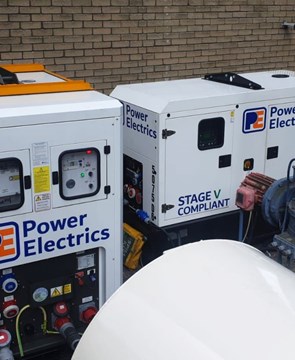What is Black Start Testing
Black Start Testing is a contingency plan that requires restoring an electric power station or a part of the station to operate without needing to rely on an external electric power transmission network to recover from a complete or partial shutdown.
Although unlikely, if the whole of the network, including the power stations supplying the national high voltage electricity distribution network were to lose power, the individual power stations would need to be restarted before they could get the grid powered again. The Black Start contingency plan means that if it were to happen, it’s completely prepared for.
Where Did Black Start Testing Originate?
The term ‘Black Start Testing’ became a common phrase after a major power failure in Manhattan in 2003, where 50 million people were without power for over two days. 21 power plants went down in just three minutes. Mission critical facilities found that their standby generator systems weren’t as robust as they had thought, and many companies hadn’t tested their backup power supplies for years.
Why is Black Start Testing Important?
To assess how long it would take to restart an individual generator unit within a building, Black Start tests are frequently carried out. Black Start testing is important as it checks that the generator starts as intended and supplies power to the parts of the building that it was designed to supply, if the mains fail.
As a building goes through its life cycle, upgrades and changes occur within the electrical systems where circuits have been added, or buildings have been extended, with a corresponding upgrade of the mains supply system. Whilst generator systems usually have a certain amount of redundancy designed to take these upgrades into account, if left untested this can place strain on the generator system, to the point where it can fail.
The high risk of causing severe disruption to a business means that it must be a planned event and should be part of any risk assessment carried out for business continuity. Most companies will carry out this test outside of normal working hours to minimise any disruptions caused consequently.
It is one of the most important but least recognised or even known, back-up plans in the UK and it's recommended that the Black Start tests are carried out at least once a year. A Black Start test plan ensures a generator can power the building throughout the building's life.
What is Load Bank Testing?
Load bank testing is a mobile load bank unit that is designed to accurately mimic the operational load that a generator can achieve. A load bank is essentially a big kettle that matches the power output of the generator. Any generator installed within a building should never have to supply full load to the building, it should be tested to ensure it’s capable of providing power to its designed specification.
Load bank testing is important because it ensures that the generator isn’t deteriorating over time to the point where one day, it can no longer provide enough power to the building and will consequently shut down. Both cooling and fuel systems will be tested and any weaknesses within the system will be identified. These can be repaired and ensures your generator is ready, should the mains fail.
During testing, engine and alternator parameters are recorded as below;
- Voltage
- Current
- Frequency
- Power
- Ambient Temperature
- Water Temperature
- Oil Pressure
- Battery Voltage
If you would like to speak to a technical expert about our load bank testing service for your generator, please get in touch and we will be happy to help.




